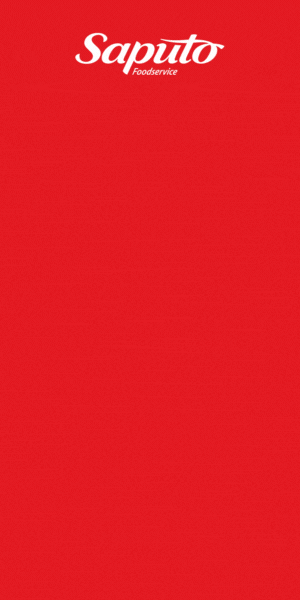One-on-One with Jacob Richler of Canada’s 100 Best
As the Canadian foodservice and hospitality industry navigates its way through the ever-changing and fast-moving COVID-19 pandemic, there is no denying that the foodservice and hospitality industry is seeing a shift. And the echos of COVID-19 will continue to reverberate, even after we overcome the pandemic.
In these unprecedented times, having an understanding of the future possibilities is essential. Although no one can’t at all guarantee what the next few months hold for us, having insight from the experts who know the industry best is useful as we think ahead, diversify our business, and innovate to stay afloat.
MENU Magazine is proud to announce that Jacob Richler, editoral director of Canada’s 100 Best, will be joining our team to provide his industry insights as a featured guest columnist.
Jacob Richler is an award winning journalist and magazine writer. He has written on food, travel and numerous other topics for Departures, GQ, Flare, Zoomer, Financial Post magazine, Toronto Life, and enRoute, Maclean’s, and National Post amongst many others. His book on Canadian cuisine, titled My Canada Includes Foie Gras, was published by Penguin in October, 2012.
Bringing his intimate knowledge of the Canadian culinary landscape, Jacob is one of the experts providing his voice and point of view to the COVID-19 situation. Readers can look forward to seeing his column in the March/April issue of MENU Mag.
He spoke with Jacob one-on-one to get his views on the industry.
What do you think MENU provides it’s audience that other publications don’t? What does MENU mean to the foodservice industry?
The fact that it is industry-specific obviously sets it apart. No other publication has such broad reach within the industry. And since I write about food more than any other topic, it’s a privilege to do it from a platform that is so directly connected to the industry I spend so much thinking about.
Why did you decide to contribute to MENU?
I started writing about food and restaurants just over 25 years ago for Saturday Night magazine. Then I was the first food columnist and restaurant critic for National Post before becoming the food columnist for Maclean’s. All were great gigs but they were all for general interest publications. Even now that I have my own magazine, Canada’s 100 Best Restaurants, I am connecting primarily with restaurant consumers. I thought it would be interesting to write directly for foodservice professionals and MENU represents that opportunity.
What angle do you bring to the table to benefit foodservice operators?
I’ve eaten a lot of great food at a lot of tremendous restaurants and I have enough experience cooking that chefs generally think that what I have to say is not just another opinion, but one informed from taste and experience. I know what’s good and what’s new.
How does your experience provide you a unique POV?
I understand top chefs. Having written Susur Lee’s cookbook, two cookbooks with Mark McEwan (recipe testing as well as copy), I have a wealth of experience that provides me with specific insight into the restaurant world.
Can you speak to the importance of celebrating Canadian cuisine?
We launched Canada’s 100 Best specifically to celebrate the best of Canadian cuisine. So I find it particularly edifying that its success has made the main access point for foreign food writers looking to find out what’s happening here.
It’s not by accident that we launched six years ago. This is a good time to celebrate our cuisine. It’s come a long way, and is far easier to define now than it was when I was starting out writing about it.
We’ve come a long way but there still work to do.
Can you speak to how Canada’s 100 Best has grown as a brand over the years?
Each year our reach grows and so it’s now bigger than ever. Aside from the 80,000 copies we print, we get many tens of thousands more digital editions into the homes of American Express cardholders. Our website is thriving, and our social media steadily increasing. It’s grown fast and keeps doing so.
What makes a restaurant one of the best in Canada?
A great restaurant should represent the complete package – starting with great food, including good service, lovely décor, a solid wine list and so on.
For my part, though, I cannot abide pretention and am mostly excited by cooking. I like it best when it’s technically accomplished and imaginative, but not showy. Like what Jay Carter has been doing these last five or six years at Dandylion.
I also like restaurants with a strong sense of place. “I like it when I can tell where I am and what time of year it is just from looking at the food on my plate. The best meal I had on that score recently was undoubtedly at Vincent Dion-Lavallé’s La Cabane d’à côté, a sugar shack in St-Benoît-de-Mirabel. Nearly everything we drank and ate, from the cider to the pork, was raised on site. The food was so genuine, simply cooked, with all the right instincts. A national treasure, that place. It’s my next stop once social distancing mandates are no longer in effect.
I like to know where and when I’m eating. The best meal I had on that score recently was undoubtedly at Vincent Dion-Lavallé’s La Cabane d’à côté, a sugar shack in St-Benoît-de-Mirabel. Nearly everything we drank and ate, from the cider to the pork, was raised on site. The food was so genuine, simply cooked, with all the right instincts. A national treasure, that place. It’s my next stop once social distancing mandates are no longer in effect.







